electrodes
Latest
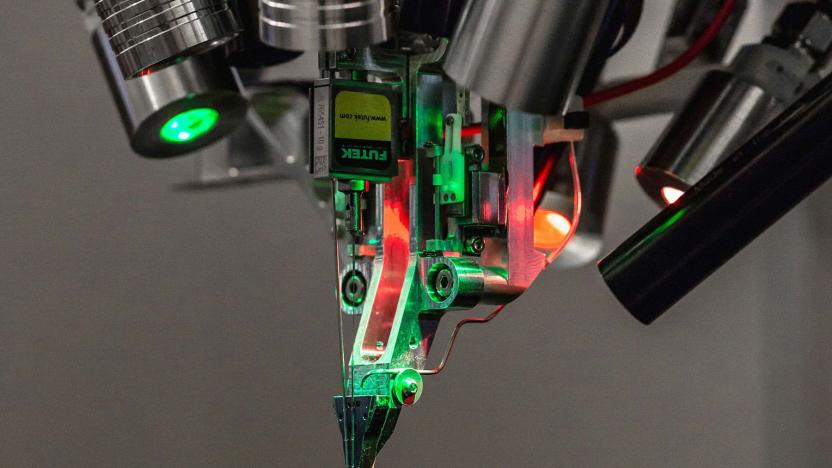
Elon Musk teases 'working Neuralink device' reveal on August 28th
Elon Musk has revealed more details about a promised development update for Neuralink, the brain-computer interface designed to help folks with severe brain injuries.
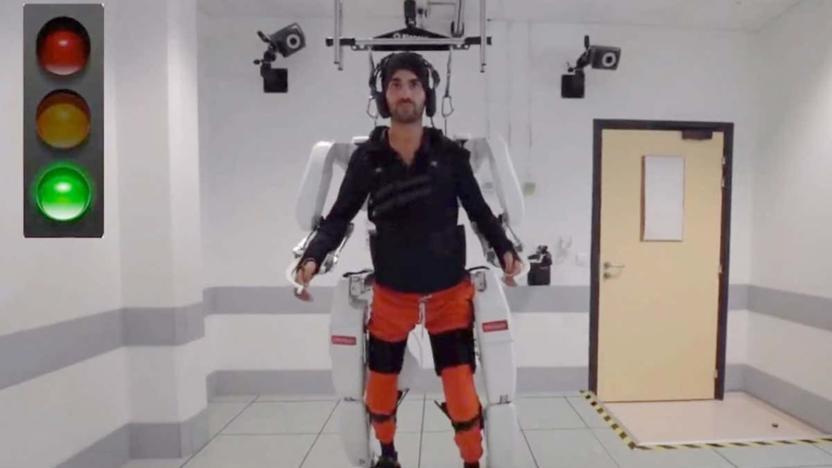
A mind-controlled exoskeleton helped a paralyzed man walk again
A paralyzed man regained the ability to walk with the help of a robotic exoskeleton that he controlled with his mind. Unlike other, more invasive mind-controlled robotics, this one used electrodes implanted above the brain's outer membrane, not in the brain itself. That could reduce the risk of infection and other obstacles that have limited the success of mind-controlled robotics.
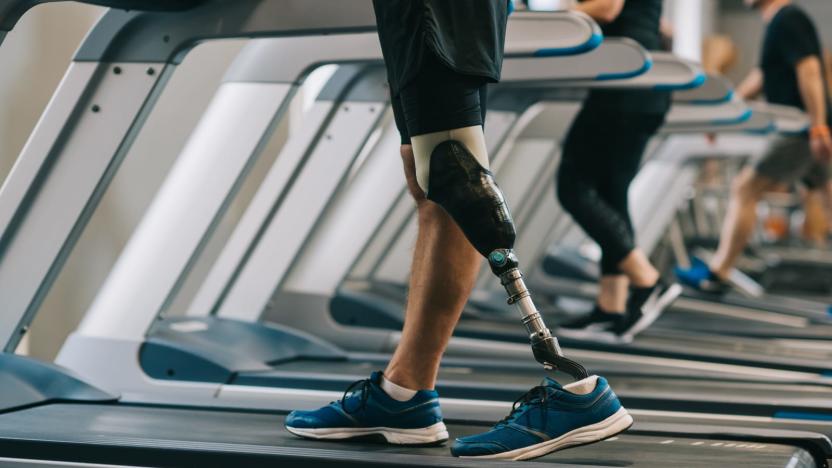
New prosthetic legs let amputees feel their foot and knee in real-time
There's been a lot of research into how to give robots and prosthesis wearers a sense of touch, but it has focused largely on the hands. Now, researchers led by ETH Zurich want to restore sensory feedback for leg amputees, too. In a paper published in Nature Medicine today, the team describes how they modified an off-the-shelf prosthetic leg with sensors and electrodes to give wearers a sense of knee movement and feedback from the sole of the foot on the ground. While their initial sample size was small -- just two users -- the results are promising.

Electronic implant helps paralyzed people walk again
People paralyzed because of spinal cord injuries could one day be able to walk again, thanks to an implant that helps send "lost signals" from the brain to leg muscles. In Nature Medicine and the New England Journal of Medicine, research teams report that several patients -- all paralyzed from the waist down -- have been able to walk again after having the electrical patch fitted to their spinal cords. The approach is called epidural stimulation.

Researchers create safer lithium-ion batteries that harden on impact
Lithium-ion batteries have a world of important applications (smartphones, electric vehicles and the Mars Curiosity Rover, to name a few), but they're also notoriously unstable, and if damaged can result in burns, house fires and even plane crashes. Now, researchers think they've found a way to eliminate these dangers, by creating a lithium-ion battery that hardens on impact.
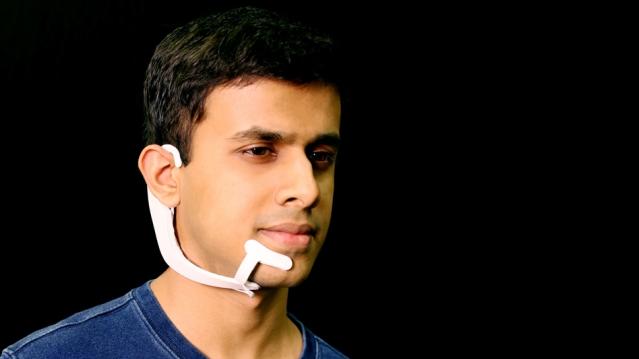
MIT's wearable device can 'hear' the words you say in your head
If you've read any sort of science fiction, it's likely you've heard about subvocalization, the practice of silently saying words in your head. It's common when we read (though it does slow you down), but it's only recently begun to be used as a way to interact with our computers and mobile devices. To that end, MIT researchers have created a device you wear on your face that can measure neuromuscular signals that get triggered when you subvocalize.

Implant-free stimulation could treat brain conditions
Scientists know that stimulating the deeper regions of your brain can treat Parkinson's and other conditions. But there's a problem: they usually need to open your skull to place implants, which is both time-consuming and risky. Researchers may have a better way, though: they've invented a deep brain stimulation technique that only requires electrodes on your scalp. The trick is to create two high-frequency electrical currents that don't do anything by themselves, but interact with each other deep inside your brain. If you want to target different parts of the brain, you just change the frequencies and placement of the electrodes.

Sensor-embedded plastic wrap makes brain surgery safer
It almost goes without saying that brain surgery requires extreme precision, but there hasn't been much advancement in brain mapping techniques for the past two decades. What good is a breakthrough procedure if you're still using bulky, imprecise 1990s-era technology as a guide? Researchers may have a better way: they've developed an electrode grid-based brain mapping tool that's both much easier to wield and far more precise. Instead of relying on the usual metal electrodes, they switched to a conductive polymer that's so tiny and thin it makes Saran Wrap look ungainly. That, in turn, let them stuff 25 times more electrodes into the same space while slimming their tool down to just 0.0002 inches thick instead of a few tenths of an inch.

Paralyzed man first to move his arm by thinking about it
Helping paralyzed people move on their own has been a lot tougher than 1970s TV shows led us to believe it would be. For what they believe is the first time, researchers used tech to bypass a quadriplegic patient's severed spinal cord, helping him move his own hand with his mind and feed himself without aid. The work could lead to "a new generation of neurotechnologies that we all hope will one day restore mobility and independence for people with paralysis," says research lead Leigh Hocherg.
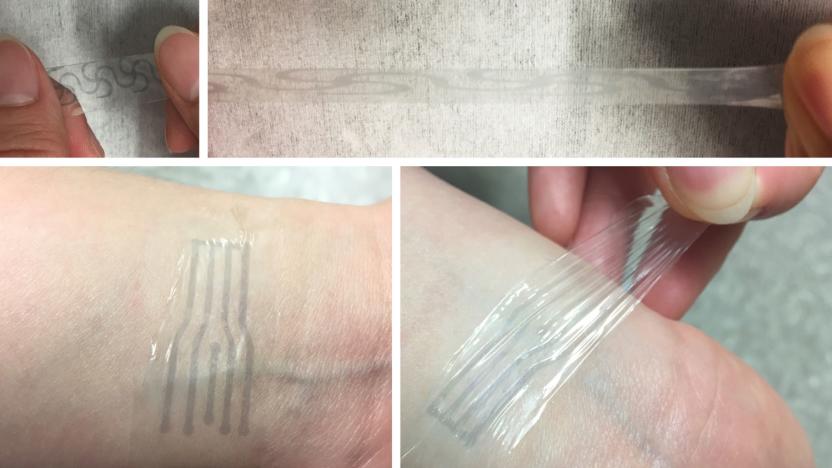
Scientists make stretchy electronics using a soup ingredient
For smart clothing or skin-worn devices to improve, first we need electronics that won't snap like a twig when you move. Using a soup thickener, of all things, scientists from Stanford's Bao Lab created a flexible electrode with "uncompromised electrical performance and high stretchability," said lab director Zhenan Bao. The material could one day be used in better brain-monitoring electronics and smart clothing embedded with heart sensors, LEDs and other tech.

Stanford researchers find a cheaper, better way to make hydrogen gas
A team of researchers from Stanford University unveiled an easier and more efficient way to strip hydrogen atoms from water molecules on Thursday. It's still the same electrolysis method that's been in use for years. But instead of using two different kinds of material for the cathode and anode, like conventional electrolysis procedures, Stanford is incorporating a pair of identical nickel-iron oxide catalysts. When a 1.5V current is applied, the system operates at 82 percent efficiency -- many times more than what its conventional equivalent can make with the same charge. It could be precisely the production breakthrough that the hydrogen fuel economy needs to actually take off.

Prosthetic electrodes will return amputees' sense of touch
For all the functionality and freedom that modern prosthetics provide, they still cannot give their users a sense of what they're touching. That may soon change thanks to an innovative electrode capable of connecting a prosthetic arm's robotic sense of touch to the human nervous system that it's attached to. The device is part of a three year, $1.9 billion DARPA project and is being developed by Daniel Moran and his team at Washington University in St. Louis. The electrode, technically called a macro-sieve peripheral nerve interface, is comprised of a thin contact lens-like material less than 20 percent the diameter of a dime. It reportedly allows its users to feel heat, cold and pressure by stimulating the ulnar and median nerves of the upper arm.

How electrifying the brain wards off Parkinson's disease
Implanting electrodes in the brain and zapping it helps patients with Parkinson's and other disorders, but doctors have never been sure why, exactly. Now, researchers from UC San Francisco think that the therapy (called deep-brain stimulation, or DBS) works by altering neural timings, in much the same way a defibrillator resets heart rhythms. In a healthy brain, neuron firing is controlled by low frequency rhythms that sync up movement, memory and other functions. But the UC team found that the synchronization is too strong in Parkinson's patients, making it harder for them to move voluntarily.

New film makes shatterproof phone screens a practical possibility
Sure, the screen on your smartphone is likely scratch-resistant, but it still won't survive a drop to the sidewalk. However, that could all change if University of Akron scientists get their shatterproof touchscreen film into shipping hardware. They've developed transparent electrodes that, when layered on polymer surfaces, are just as transparent as current technology (indium tin oxide) but much more durable. You can bend them over 1,000 times without breaking, and they also hold up against peeling.

Researchers create self-healing batteries inspired by artificial robot skin
In the race to create a better battery, scientists have gazed longingly at silicon, prized for its ability to hold copious energy during charging. The material has a significant drawback, however: it likes to expand during said charging, causing it to eventually crack and become useless. However, scientists at Stanford's SLAC laboratory have developed silicon electrodes that repair themselves, inspired by -- of all things -- the latest research into robotic skin. They created a silicon polymer with weak chemical bonds which attract each other when the material cracks, allowing it to regain its shape in a few hours (as pictured above). The team managed a respectable 100 discharge cycles with a battery that used the material, a promising start but still far from their goal of 3,000 cycles for an electric vehicle. You can add that to the growing pile of promising battery tech that may amount to something, some day -- but at least the odds keep getting better.

Duke melds two rats' minds through the internet, Spock may not approve
Some would say the internet already lets us share every minute detail of our thoughts, much to our followers' dismay. Duke University isn't deterred by our behavior -- if anything, it just took oversharing literally by connecting two rats' minds in an experiment, first in a lab and ultimately online. Electrodes attached to the brain of a host "encoder" rat in Brazil processed the motor-oriented mental activity for a desired behavior, such as pressing a lever on cue, and converted it into a signal that was then received by a "decoder" rat as far away as Duke's US campus. The majority of the time, the decoder rat performed the same action as the encoder. Researchers also found that rewarding the encoder alongside the decoder created a virtuous loop, as treating the first rat for a job well done focused its attention and improved the signal strength. We're not sure that Vulcans would endorse this kind of mind meld, though: apart from immediately depriving the decoder rat of self-control, prolonged testing led to the same rodent developing additional sympathetic reactions to the encoder. There's also concerns that the test was too binary and didn't reflect the complexity of the whole brain. All the same, Duke's study is proof enough that we can export brainwaves in a meaningful way.

Swiss bionic hand offers true sensations through the nervous system
Those wearing bionic hands and similar prostheses often suffer a frustrating disconnect when they can touch an object but can't feel it, even if they're using direct neural control. The École Polytechnique Fédérale de Lausanne and allies in Project TIME have developed a hand that could clear that psychological hurdle. The design implants electrodes directly in key nerves that not only allow motor input, but deliver real sensory feedback from the artificial appendage -- including needle pokes, much to the test subject's chagrin. An early trial (seen above) kept the enhanced hand separate from the wearer and was limited to two sensations at once, but an upcoming trial will graft the hand on to a tester's arm for a month, with sensations coming from across much of the simulated hand. EPFL hopes to have a fully workable unit ready to test in two years' time, which likely can't come soon enough for amputees wanting more authentic physical contact.

Sony patent application puts electrodes in a pillow, eases you out of slumber
You could monitor your sleep using the science of actigraphy but, as we've learned, accelerometers don't always make for the best slumber trackers. The real deal stuff, used by scientists, requires all sorts of electrodes, which are a tad cumbersome and tend to yank out hair. Sony is proposing a system that removes the glue and sticks the sensors in your pillow. This is according to a patent application the company filed that proposes, among other things, an advanced alarm clock that monitors brain waves to detect when you enter and leave REM sleep. One particular example has it guiding users though an efficient power nap, by starting a timer once they've started dozing and only waking them once they've come out of a deeper sleep state. The proposed alarm could take any number of forms, from a buzzer, to a flashing light or bed shaking motor. To dig through the application for yourself hit up the source link.

Nature-inspired nano-material builds a better electrode, points to greener future (video)
From the apple falling on Newton's head to batteries made out of root extract, scientists have long turned to nature for ideas. Following that tradition, the brainiacs over at the University of Reading have developed a new nano-material electrode coating based on the cellular structure of plants. Essentially a network of tiny wires, it features a larger surface area than flat electrodes, giving it the leverage it needs to convert more electricity in a smaller form factor. This could lead to cheaper cell production and good things for the future of green energy. "This novel electrode coating technique has applications for fuel cells in the newest generation of hybrid cars, photovoltaic cells, rechargeable batteries or battery production for a wide range of green technologies," said the university's Dr. Adam Squires. Hopefully this sort of technology makes its way to consumers in a timely fashion, but in the meantime we can't help but marvel at how this nature-inspired technology is being used to save its muse. Poetic, isn't it? To find out how the nano-material is made, check out the source and the video after the break.

Georgia Tech develops self-charging battery that marches to the owner's beat
One of the last times we saw the concept of a self-recharging battery, it was part of a high-minded Nokia patent whose ideas still haven't seen the light of day. Researchers at Georgia Tech are more inclined to put theory into practice. Starting from a regular lithium-ion coin battery, the team has replaced the usual divider between electrodes with a polyvinylidene difluoride film whose piezoelectric nature produces a charging action inside that gap through just a little pressure, with no outside voltage required to make the magic happen. The developers have even thumbed their noses at skeptics by very literally walking the walk -- slipping the test battery under a shoe sole gives it a proper dose of energy with every footstep. At this stage, the challenge mostly involves ramping up the maximum power through upgrades such as more squeezable piezoelectrics. Georgia Tech hasn't progressed so far as to have production plans in mind; it's nonetheless close enough that we could see future forms of wearable computing that rarely need an electrical pick-me-up.







